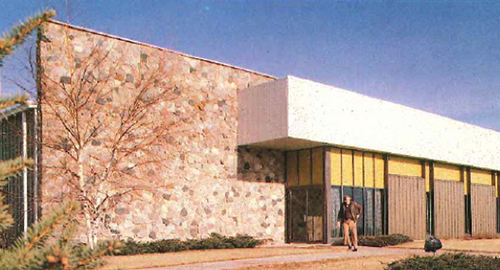Our Heritage
Powering Happy Moments Since 1906
After over 110 of years making batteries in Wisconsin, we have more than a few reasons to be passionate about what our
people have accomplished together.
Take a trip through our archives to see the products, places, and people RAYOVAC® has touched throughout the years.
1917
The U.S. declares war on Germany and The French Battery Company receives military orders for thousands of their No. 6 size cells and flashlight cells to help aid the war efforts.
Image Top:
1917-1918-Can Wrapping during WWI
Image bottom:
1917-1918-Making Zinc Cans during WWI
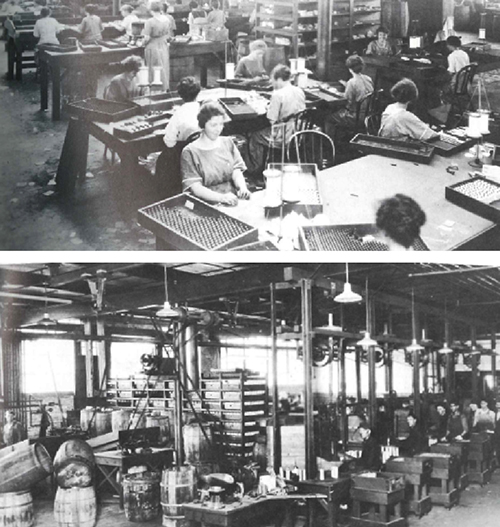
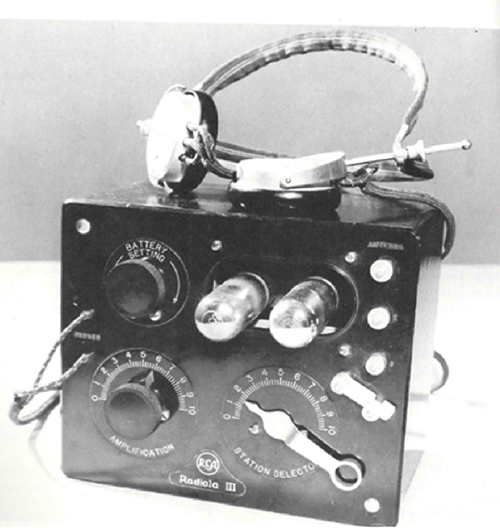
1920
"This is KDKA East Pittsburgh" - these historical words spark the radio revolution, signaling the beginning of one of the most amazing tech booms in American history.
- By 1923 nearly 600 stations take to the airwaves to feed the nation's appetite.
- Radios mean batteries and French's sales jump into the thousands per day, seemingly overnight.
- Nearly 100 latecomers set up shop in warehouses, garages, and basements to help power the radio craze.
Image Left:
Early RCA radio with headphones.
1927
Charles Lindbergh solos across the Atlantic on May 20, 1927 in the "Spirit of St. Louis," carrying two Ray-O-Lite flashlights as part of his emergency equipment.
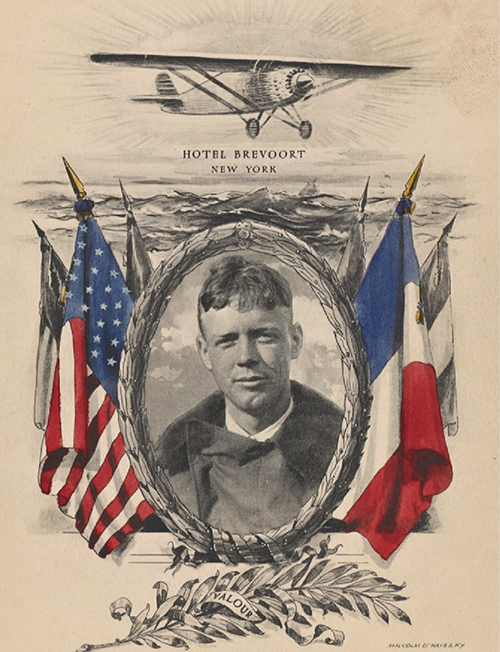
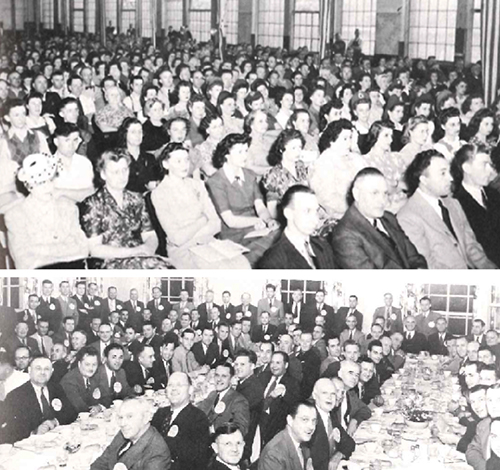
1941-45
Pearl Harbor ignites U.S. participation in WWII and RAYOVAC® leak-proof batteries are demanded by the millions to power field telephones, mine detectors, radio communications, flashlights and other gear.
RAYOVAC
- Establishes seven new production facilities
- Scours up nearly 14,000 new employees, many of them women and elderly men
- Supplies the U.S. military with nearly 500,000,000 batteries
- Is awarded with eight Army-Navy "E" awards for major contribution to victory by the war’s close
Image Top:
Army Navy "E" award ceremony at the RAYOVAC® Clinton plant.
Image bottom:
National sales conference in 1940 was the last one until after WWII.
1942
Don Tyrell turns an unmanned floor of RAYOVAC®'s flashlight plant into a makeshift factory for Browning Automatic Rifle (B.A.R) parts, working within a wartime organization made up of vastly different manufacturing firms.
RAYOVAC®'s Clinton plant produced nearly 12 million rifle, gun, bazooka, and grenade parts for the military, plus huge quantities of flashlights.
Image Right:
A Clinton made automatic rifle in action during World War II.
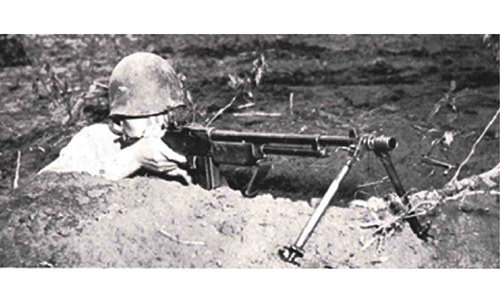
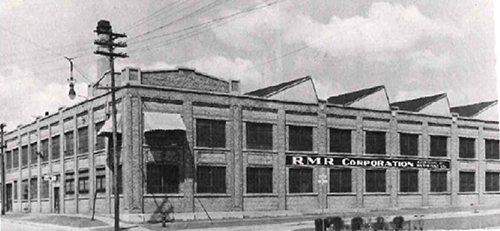
1944
Tropical heat and humidity wreak havoc on RAYOVAC®'s regular leak proof cells. French partners with a co-inventor of the plug-in radio, Dr. Samuel Ruben, to expedite production of his newly developed air tight button cells to support the pacific troops.
Staffing the new button cell plant in Madison is such a struggle that RAYOVAC® allows people to work "pay-as-you-go" shifts doing simple tasks- often teaching them on the spot the same day as they would be paid for their work.
Image Left:
RMR Plant gave work to thousands with "full-time, part-time, pay-as-you-go" programs during WWII.
1965
"Doc" Swenson, RAYOVAC® production worker, takes the U.S. media by storm as America's Oldest Worker at the age of 100.
- Ten years prior, at age 90, "Doc" is gifted with a brand new Chevrolet by President and GM Don Tyrell, fulfilling a promise made nearly 10 years earlier.
Image Right:
Doc Swenson punches the time clock on his hundredth birthday, 1965.
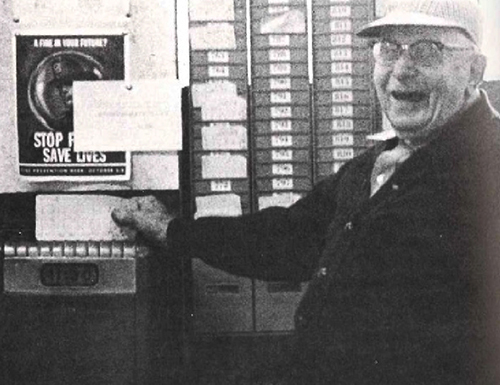
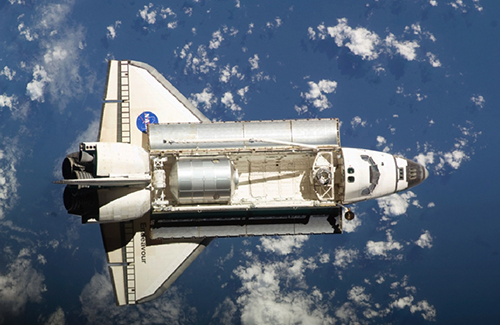
1992
A specially designed RAYOVAC® battery is on board the Space Shuttle Endeavor for its maiden voyage.
- We continue to supply the government with specialized batteries today.
Image Left:
Space Shuttle Endeavor in orbit.
1992
RAYOVAC® begins a decade plus long relationship with Arnold Palmer for appearance in numerous advertisements promoting the hearing aid batteries.
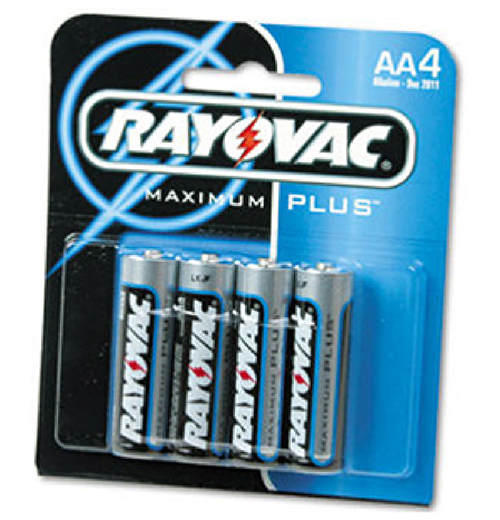
1995
RAYOVAC® contracts with Michael Jordan to launch new Renewal battery technology to the public and later market RAYOVAC® Maximum Alkaline, among other products.
Image Left:
Space Shuttle Endeavor in orbit.
1914
The French Battery Company introduces the French Flasher
- Flashlights are so novel at the time publications often refer to them as "electric candles".
- Battery technology is so poor that consumers flash them on and off to keep them working for any valuable amount of time, yielding RAYOVAC®'s product name.
Image Right:
French Flasher Light with Sales Winner point-of-sale display poster.
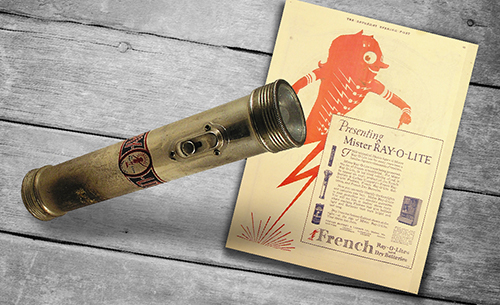

1933
RAYOVAC®'s Arthur Wengel patents the first portable radio with high fidelity reception.
- Cumbersome by today's standards, its suitcase style shape draws crowds as its inventors lug it through the streets of New York and Philadelphia.
Wengel's portable plays as clearly today as in 1933.
Image Top:
Art Wengel, creator of the portable radio and wearable vacuum hearing aid in the 30s.
Image Bottom:
Tuning it in is President Benno A. Bernt. At left, Martin H. Johnson, now Vice-president of Engineering; at right, Harry Mason, retired Vice-president Engineering and Development.
1937
RAYOVAC®'s Arthur Wengel patents the first wearable vacuum tube hearing aid.
- Wengel also pioneers scientific methods to test hearing and originates the concept that hearing aids should be fitted to each individual wearer.
- Wengel releases the patent to the market at large in order to spur investment in the infant technology.
Image Right:
Original Wengel hearing aid was presented to Kent State University’s hearing aid museum by President Benno A. Bernt, left, Dr. Kenneth W. Berger of Kent State is wearing the earphone.
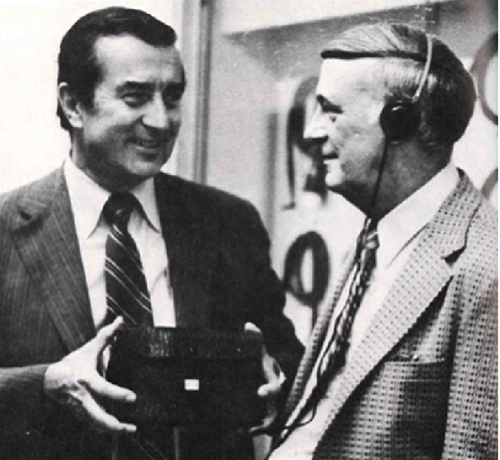

1939
RAYOVAC® introduces the first leak-proof "Sealed in Steel" dry cell battery just 3 months before Hitler's legions invade Poland.
RAYOVAC
- The patented, industry-first steel can reduces leakage and provides a much longer lasting battery.
Image Left:
Early leak proof advertising did not trumpet the main advantage of this new battery. During WWII, a "soft sell" approach was used, because nearly all went to the military instead of civilians.
1949
RAYOVAC® introduces the steel Sportsman® flashlight.
- Designed expressly for campers, hunters, and fisherman, it's triple plated chrome shell and stylish exterior make it a universal favorite.
Image Right:
Sportsman® flashlight introduced by Clinton in 1949.

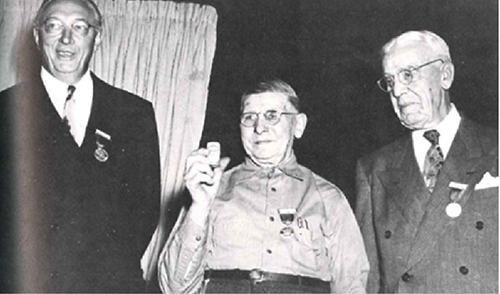
1950
The one billionth RAYOVAC® leak proof battery rolls off the assembly line.
- RAYOVAC® celebrates the occasion with a ceremony attended by then Wisconsin Governor, Oscar Rennebohm among others.
- Today we produce billions of batteries globally each year.
Image Left:
Doc Swenson holds the billionth Leak Proof battery, flanked by President Bill Cargill, left, and found James B. Ramsay.
1972
RAYOVAC® becomes the first U.S. firm to introduce heavy duty all zinc chloride batteries, with double the life of the Zinc Carbon batteries currently on the market.
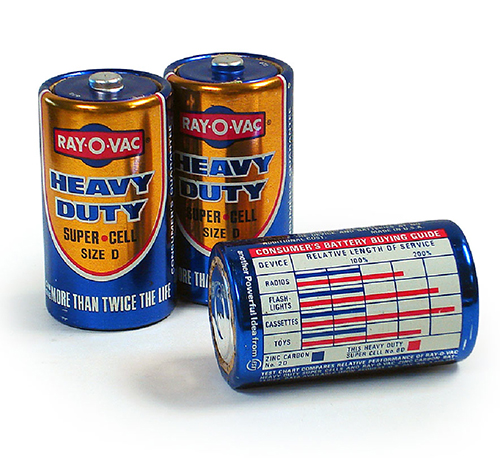

1993
RAYOVAC® introduces Renewal, a reusable, long-life alkaline battery.
2002
RAYOVAC® acquires European-based battery maker VARTA®'s consumer battery business.

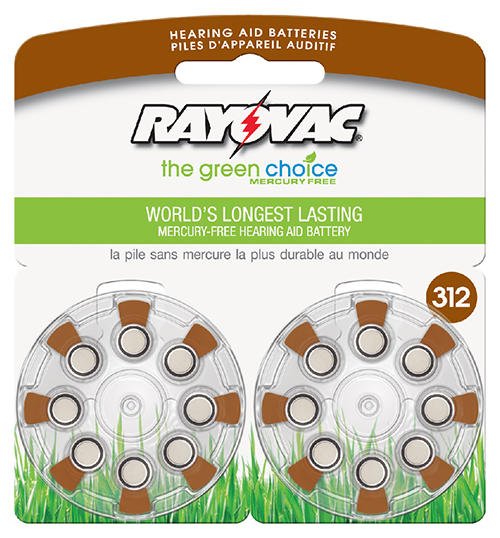
2008
RAYOVAC® Hearing Aid Battery business Launches its RAYOVAC® Mercury Free hearing aid battery continuing its commitment to the environment.
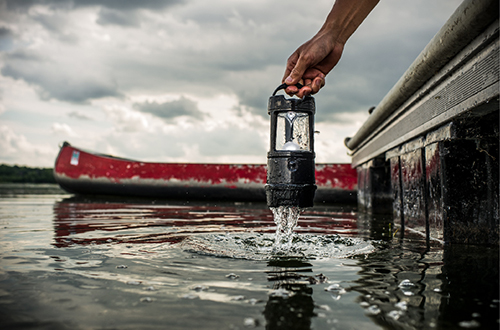
2011
RAYOVAC® launches the Virtually Indestructible flashlight series, our most durable line of lights ever.
2015
RAYOVAC®launches Fusion® Advanced Alkaline, our longest lasting batteries.
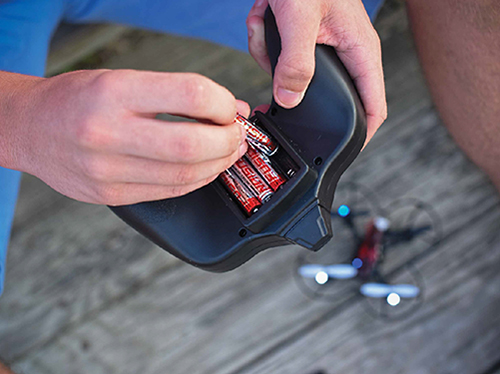
1906
RAYOVAC®'s original 6-inch cells are modestly manufactured in a Chicago attic by one Alfred Landau.
- Mostly used to operate telephones, they are sold at a cut price to the retail trade.
- After a young James Ramsay takes an interest in the business, the operation moves to Madison, WI later that year and is incorporated under the name, "The French Battery Company."
Image Left:
Original Fleur-De-Lis Trademark (1907).
Image Right:
James B. Ramsay - Founder.
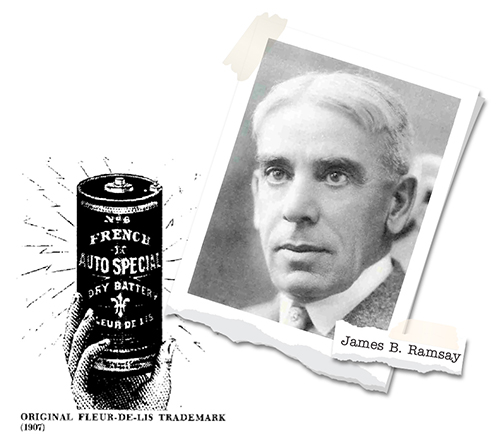
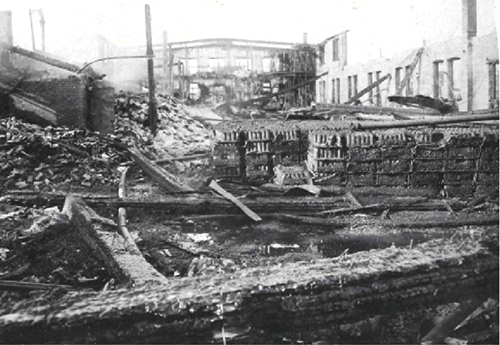
1915
A disastrous blaze starting in the flashlight department destroys the Madison plant.
- Ramsey sets up a temporary quarters and had RAYOVAC® back in limited production within the next two weeks.
- French invests nearly $70,000 in a new building located on Madison's Winnebago street in 1916.
Image Left:
Ruins of the French Battery Plant after the 1915 fire.
1918
Founder and then CEO Ramsey conducts Madison's first Red Cross fund drive, while also serving on the school board.
Image Right:
All 219 employees at the new Winnebago Street Plant, 1916.
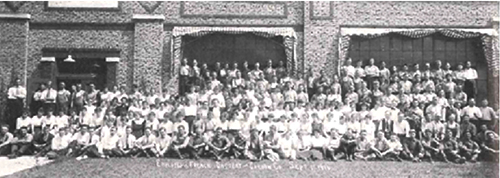
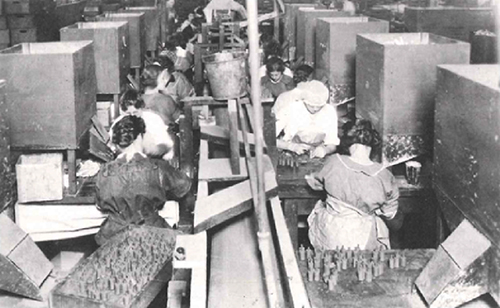
1924
An insistent board member and a trip to the Eastman Kodak plant in Rochester, NY leads to RAYOVAC®'s first foray into automated equipment with investment in a conveyor system.
- RAYOVAC® spends nearly $75,000 to purchase the state of the day system where parts steadily flow past operators.
Image Left:
Assembly line at Winnebago Street plant, 1917.
1934
The French Battery Company changes its name to the RAYOVAC® Company.
Image Right:
Original RAY-O-VAC lettering, as trade-marked December 27, 1921.

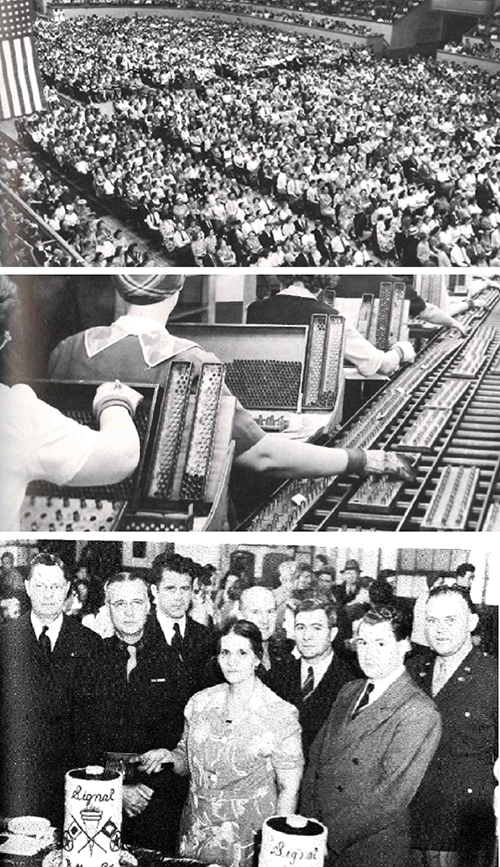
1943
During peak WWII battery production, RAYOVAC® establishes the world's largest battery plant in Milwaukee - The Signal Battery Complex.
- To gain traction within Milwaukee's dwindling workforce, RAYOVAC® hires actor Walter Pidgeon to headline a gigantic "Calling Milwaukee" show in the Milwaukee Auditorium stressing the army's need for batteries.
- The widely promoted show draws over 10,000 patrons and helps recruit nearly 5,000 employees.
- The signal plant achieves its two million cell daily production quota by early 1944 - they celebrate with 1,200 pounds of battery shaped cake.
Image Top:
The lucky 10,000 who got in to see free "Calling Milwaukee" show.
Image Middle:
Automated process inspection line at Signal Battery Plant.
Image Bottom:
Celebrating achievement of Signal's two-million cell daily production quota early in 1944. 1,200 pounds of cake - baked in the shape of giant batteries - were served.
1956
RAYOVAC® celebrates its 50th birthday by listing 700,000 common shares at an opening price of $16.50 on the NYSE.
Image Right:
RAYOVAC® stock went "on the big board" July 30, 1956. Checking the ticker tape are Keith Funston, left, president of the New York Stock Exchange; President D. W. Tyrrel and E. B. Schryver, stock broker.
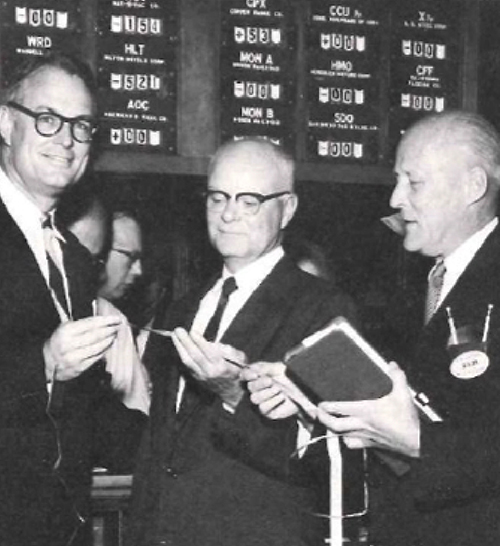
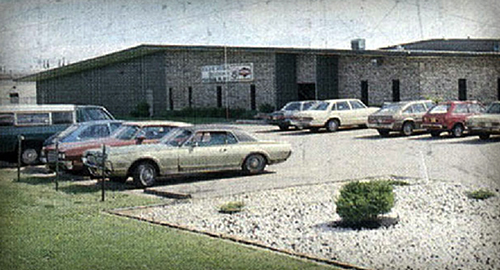
1963
The RAYOVAC® hearing aid battery plant opens in Portage, WI.
- The facility was originally a dairy plant.
- Today, our Portage plant is the global leader in Hearing Aid Battery manufacturing employing over 200 people.
Image Left:
Portage Plant - Wisconsin.
1970
RAYOVAC® opens the Fennimore, WI plant.
- Today, our Fennimore plant produces around a billion batteries in the USA every year and employees nearly 300 people.
- In 2008, Fennimore was featured on the National Geographic Show "Factory Floor with Marshall Brain."
Image Right:
Alkaline batteries in several sizes are produced in this attractive plant at Fennimore, Wis, which was inaugurated in 1970.
